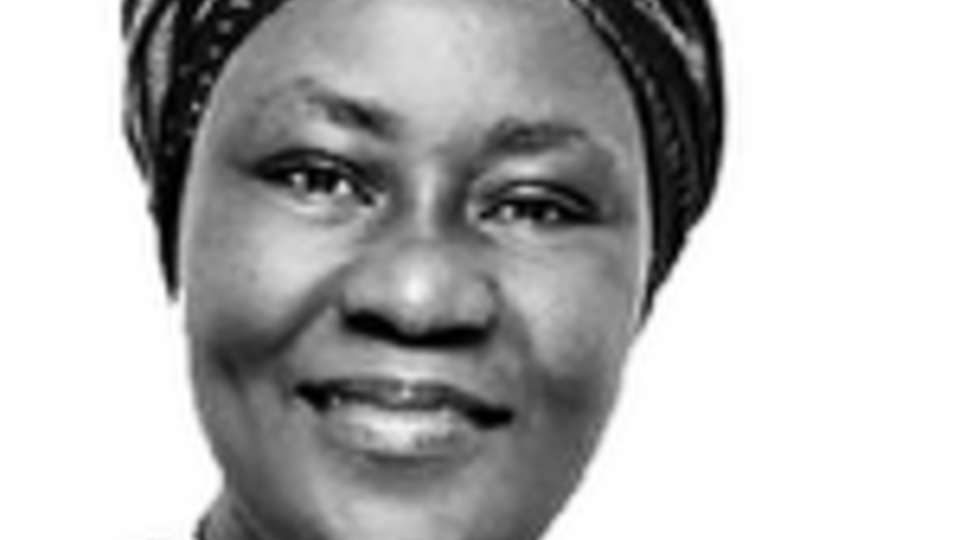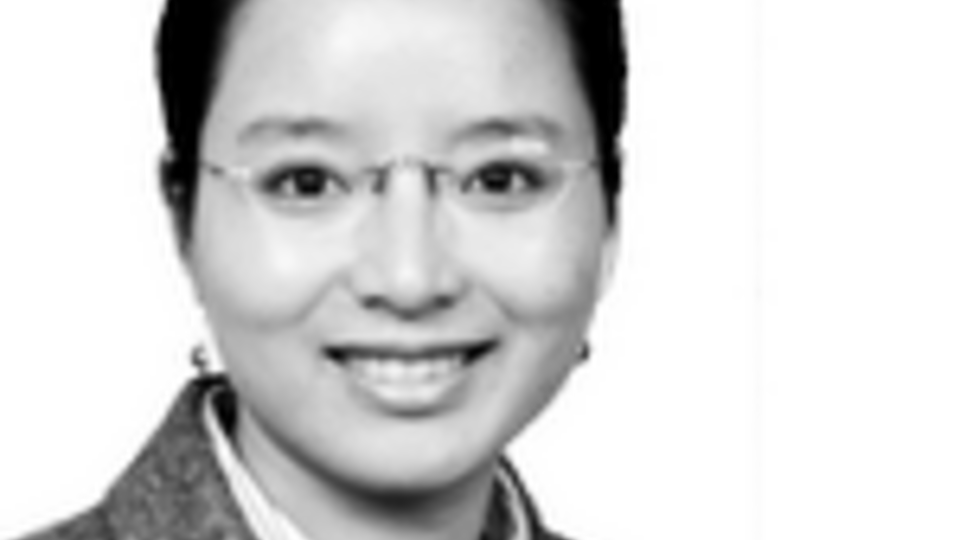Jump to the content
- {{#headlines}}
- {{title}} {{/headlines}}
Exzellenz verbindet: The Humboldt Network is a network of cooperation and trust. More than 30,000 Humboldtians in over 140 countries share the experience of a research stay in Germany. In accordance with its motto “Once a Humboldtian, always a Humboldtian”, they are ambassadors for Germany as a research destination throughout the world. Every year, independent selection committees choose the new members of the network. The most important criterion is the candidate’s academic excellence. There are no quotas for countries or subjects. This is how the unique Humboldt Geography of Knowledge that continually develops and changes has evolved since the Foundation was established in 1953.
The world maps and graphs deliver up-to-date information on the Foundation, which you are encouraged to explore. From where does the Foundation recruit new Humboldtians? Where do Humboldtians work today? The data provide answers at the level of countries, regions and institutions.
The figures are retrieved from the current correspondence addresses of more than 30,000 active Humboldtians as held by the Alexander von Humboldt Foundation on 03 January 2024.
For more information please see How to Read the Humboldt Geography of Knowledge.
Where are Humboldians based?
Regions at a glance:

The US Network: Leadership for Science and Society
“It’s useful to have geniuses around,” wrote the Washington Post in summer 2009, referring to the then Secretary of Energy, Steven Chu. The Deepwater Horizon oil rig had exploded in the Gulf of Mexico and the Nobel laureate in the US cabinet recommended to the BP managers that gamma rays be used to examine the defective pressure valve. This turned out to be the crucial move in controlling the environmental disaster. Back in the 1980s, at a fairly early stage in his career, the physicist Chu had managed to use laser light to cool and thus decelerate atoms. For this “atom trap” he was awarded the Nobel Prize in Physics. The door to the Humboldt Network had already been opened for him by Theodor Hänsch. The exceptional German physicist and future Nobel Prize winner had nominated Chu for a Humboldt Research Award. With over 5,000 Humboldtians, the US Network is the largest worldwide; the majority of Humboldtians who have won the Nobel Prize work in the United States. Just like many US Humboldtians, Steven Chu is still active at the intersection of science and society, for example as President of the American Association for the Advancement of Science.

Humboldtians as Bridge Builders: Transatlantic Reconciliation and Friendship
George Leitmann was 13 years old when SS men plundered his family’s apartment in Vienna following the November Pogroms of 1938. In 1940, Leitmann and his mother managed to escape the Holocaust on the last ship to leave Italy heading for the United States. Leitmann returned to Europe in 1944 as a lieutenant in the United States Army. His unit was involved in liberating Landsberg Concentration Camp and, after the war, Leitmann was one of the interrogating officers at the Nuremberg Trials. Despite, and precisely because of his own personal history, during his brilliant career as a professor of engineering at the University of California, Berkeley, Leitmann dedicated himself to promoting German-US academic exchange as one of the pillars of transatlantic friendship. The Humboldt Research Award winner, who died in May 2025 shortly before his 100th birthday, was guided by the maxim that “we all live on this planet and are therefore well advised to get on with one another.” The numerous fellowships and awards have helped US researchers to put this maxim into practice. To this very day, the Humboldt Network makes a significant contribution to sustaining and expanding transatlantic friendship.

US Early Career Researchers: Brilliant, Young, Mobile
“I made valuable international contacts that I wouldn’t have made otherwise, and I learned a lot about the German science system,” says the chemist, Sarah King, looking back positively on the time she spent in Germany as a Humboldt Research Fellow. And King’s host at the Max Planck Society’s Fritz Haber Institute in Berlin is impressed by the early career researcher’s academic achievements, too. Having studied at MIT in Cambridge and completed her Ph.D. at the University of California, Berkeley, at the age of just 27, Sarah King is one of more than 230 top early career researchers from the United States who successfully applied to the Humboldt Foundation for a post-doctoral fellowship in order to drive their careers by spending time working on research in Germany. A good decision: on returning to the United States, Sarah King accepted a position as Assistant Professor at the University of Chicago.

A Powernetwork for the Humanities and Social Science
Early in the 1980s, Seyla Benhabib was a Humboldt Research Fellow at the Max Planck Institute for Social Sciences in Starnberg. Her mentor, Jürgen Habermas, one of the Federal Republic’s most famous philosophers, raved about the young Hegel expert at the time. Today, Benhabib herself is considered the unrivalled political philosopher. After stints at Boston and Harvard, since 2001, the US citizen with Turkish Sephardic roots has held the Eugene Meyer Professorship of Political Science and Philosophy at Yale University. Her books “The Rights of Others” and “Dignity in Adversity. Human Rights in Troubled Times”, in which she logically thinks through Habermas’s figures of thought for the age of global migration, are read by people all over the world. Benhabib is an example of the many highly- visible humanities and social science scholars who have made their mark on the transatlantic Humboldt Network. Accounting for about 25 percent of the network, humanists and social scientists are well represented in the US Network.

Regional Excellence: Top Research Beyond Berkeley, Harvard and Yale
Athens is in the US state of Georgia. Once famous for its textile industry and known as the Manchester of the South, today, people are drawn to the historical city centre by its world-famous music clubs. But, above all, the 17 schools and colleges of the University of Georgia and its students are what give the city its character. In 1785, UGA was the first state university to be founded in all United States. Gregory H. Robinson, a world-leading expert in organometallic chemistry, teaches and conducts research at UGA. The community pricked up its ears in the 1990s when Robinson built spectacular triple bonds between metallic atoms, which revolutionised existing bonding theories. He had previously been a Humboldt Research Fellow at TU Berlin. The manufacture of a silicon allotrope combined with a new technique for stabilising highly-reactive compounds in 2008 is also considered pathbreaking – knowledge that benefitted German colleagues during Robinson’s sojourn as a Humboldt Award winner in Oldenburg and Berlin. Whether in Georgia or Michigan, Texas or Missouri: Humboldtians are to be found at more than 850 institutions in 50 US states and shape transatlantic academic relations in many different ways.

Shaping Society: Humboldtians Excel Beyond Academia
In the mid-1990s in Moabit Criminal Court, the US legal scholar Peggy Kuo was observing the trial of a Berlin restaurateur who had laid out flyers in his bar with the wording “Run, run Mr Asylum-seeker. December 31 is deportation day!”, along with a corresponding image. At the time, Peggy Kuo was a German Chancellor Fellow in Berlin, focussing on a comparison of German and US criminal law. The bar owner was sentenced to four months probation for instigating violence. Kuo later observed that German criminal law, based on the historical experience of Nazi rule and world war, reflected the conviction that denigrating certain people or groups of people with the aim of degrading them is the “first dangerous step toward disaster,” Kuo later summarised. In the United States, on the other hand, freedom of speech, as legally guaranteed in the Constitution, even protects to “hate speech”. Today, Peggy Kuo is a Magistrate Judge in the Eastern District of New York. Many US Humboldtians like her who work outside of academia make important contributions to building society and reinforcing international understanding.

Germany’s Neighbours: Research on Top Levels
How can a sunflower grow to a height of four metres from a tiny seed? Amazement at the nature of the world is something Nobel laureate, Bernard L. Feringa, has known since childhood – a childhood spent on a farm in the German-Dutch border country together with nine brothers and sisters. As a child, the chemist dreamt of discovering something, and as the Jacobus H. van 't Hoff Distinguished Professor of Molecular Sciences at the University of Groningen he has doggedly pursued the development of molecular machines. These are molecules, or combinations of molecules, which can be made to move around and do things. After some 30 years of research, Feringa finally managed to manufacture a molecular nanocar – top-level research from the Netherlands as an example of the strengths of the European network which is home to roughly 10,000 researchers from Ireland to Russia and Finland to Portugal. Feringa received the Humboldt Research Award in 2011. On 16 October 2016, the telephone rang in his office and the secretary of the Nobel Committee in Stockholm was on the line.

The French Network: Reconciliation by Exchange
Sworn enemies became friends at the moment when Charles de Gaulle and Konrad Adenauer signed the Elysée Agreement in Reims in 1963. That, at least, according to Corine Defrance, was the official narrative surrounding German-French reconciliation that was symbolically staged, time and again. In actual fact, the process of rapprochement between the two countries was set in motion shortly after the war by actors in civil society. German-French relations are Corine Defrance’s special field. A Humboldt Fellow in Bonn in the mid-1990s, she paved the way for a study of denazification and democratisation at German universities. Since then, her academic career has taken her to both sides of the Rhine, working in Paris, Mainz and Strasbourg. Now a professor at the Centre National de la Recherche Scientifique, she herself has become part of the process of German-French reconciliation – just like many of the French researchers who have received the Foundation’s fellowships and awards since 1953, enabling them to do research and make friends in Germany.

The Largest National Network: From Poland into the World
The final showdown in Harry Potter and the Chamber of Secrets is between a serpent-like basilisk and the phoenix Fawkes. Both creatures are borrowed from Naturalis Historia by Pliny the Elder. In her international research project “Our Mythical Childhood”, Polish classical scholar, Katarzyna Marciniak, investigates how antiquity and its mythical creatures travel around the world in different guises. Marciniak was just 31 when she completed her habilitation on Cicero’s poetry at the University of Warsaw. She then became the first researcher in the history of the Polish humanities to be awarded a Consolidator Grant by the European Research Council. Her unique career illustrates the excellence of Polish Humboldtians who form the largest national network in Europe. In 2014, Marciniak received the Humboldt Alumni Award. She also involves actors in civil society in her project, such as groups of Polish school students – because just as Humboldtians see themselves as a community in the tradition of Humboldt’s

Leading: Humboldtians in the United Kingdom
On a regular basis, the most successful applications and nominations in Europe come from the United Kingdom. Italian-born Cinzia Casiraghi also completed part of her education in the UK. She took her doctorate in electrical engineering at the University of Cambridge at the very time Andre Geim and Konstantin Novoselov managed to isolate a new form of carbon: two-dimensional graphene. This type of carbon, which is composed of just a single layer of carbon atoms, has a unique combination of properties: graphene is harder than steel but malleable, incredibly light and, above all, has extreme conductivity. Cinzia Casraghi elected to focus on studying this super material. For her research project on one- and two-dimensional carbon for faster processors, the Humboldt Fellow at FU Berlin was granted the Sofja Kovalevskaja Award in 2008. The experimental physicist then returned to the United Kingdom as a graphene expert: the Humboldtian is now Professor of Nano Science at the School of Chemistry at the University of Manchester – the place where graphene was isolated for the very first time in 2004.

New Bridges between East and West
The Romanian pain researcher, Alexandru Babes, is one of the few Humboldtians to have experienced the Humboldt Network as a child. Father Babes established the Humboldt Club in Bucharest; today, son Alexandru is the Foundation’s Ambassador Scientist in Romania. In the days of the Iron Curtain, conditions were difficult. Now, Romania is part of the European Union. Yet, the academic gulf between Eastern and Western Europe was still to be overcome – a development for which Alexandru Babes campaigns through his networking. Only the second Humboldt Award winner from his country, Babes is one of the top researchers in the European network. As a neuroscientist he has investigated how nerve cells detect stimuli and how they respond to heat and cold. He first came to Germany as a Humboldt Research Fellow in 2006 after completing his doctorate in biology at the University of Bucharest. He still actively collaborates with his host at the time, Professor Peter Reeh of the Institute of Pathology and Pathophysiology at FAU Erlangen-Nürnberg. His last visit to FAU saw him receiving the Humboldt Foundation’s Friedrich Wilhelm Bessel Research Award.

Russia: A Traditional Science Nation in Transition
Giant Molecules, Polymer Gels and Networks, and Statistical Physics of Macromolecules are just three of the international textbooks written by Alexei R. Khokhlov, most of them together with his colleague Alexander Grosberg. Both scientists have received research awards from the Foundation for their work. The monographs mentioned introduce students all over the world to the physics and chemistry of polymers, the field in which Alexei Khokhlov made a name for himself well beyond the borders of the Soviet Union at that time as a young “Candidate of Sciences.” In 1989, at the age of 29, he completed his doctorate at Lomonosov State University of Moscow and was made a professor in 1988. A top researcher and holder of the State Prize of the Russian Federation, he has openly criticised the structures in the academic world in Russia today which have led to “promising, young native Russians” going abroad. During his career, he himself also always invested his energies in international collaborations. Together with German colleagues, the Vice Rector of Lomonosov State University of Moscow and Vice President of the Russian Academy of Sciences founded the Institute for Advanced Energy Related Nanomaterials in Ulm in 2012.

Sub-Saharan Africa: A Luminous Network
Under the apartheid regime Heather Marco was allowed to study at the University of Cape Town in South Africa with limited rights only. For many years now, the senior lecturer of animal physiology has campaigned to promote academic excellence in Africa by means of research collaborations and academic exchange, especially with Germany. “Africa is in the middle of tremendous change,” says Heather Marco. And more research and innovation is needed to achieve sustainable development. Many of the 670 or so Humboldtians in Sub-Saharan Africa conduct pioneering work for excellent research in their fields. They act as multipliers, building bridges between their countries and Germany. The African-German Network of Excellence in Science (AGNES), which is self-run and sponsored by the Foundation, supports supra-regional networking and does important work addressing and promoting early career researchers. Having chaired the Governing Board for two successive periods in the fledgling years, Heather Marco has crucially shaped AGNES over the last ten years.

Promoting Women: Strong Impetus from Ethiopia
“My mother was herself uneducated but dedicated herself to follow up the academic performance of her children,” Yalemtsehay Mekonnen recalls. For her generation, the Ethiopian cell and human physiologist has had a unique path in life. From 1988 to 1992 she even accepted being separated from her husband and two children in order to work on her dissertation in Heidelberg. In 2009, she became the first woman in Ethiopia to be appointed to a professorship. Today, she is a role model for women junior researchers well beyond the borders of Ethiopia, because women are still under-represented at African universities. So, without further ado, Mekonnen was the first gender office head of the College of Natural Science of Addis Ababa University and organised Ethiopia’s first Humboldt Kolleg on “Inspiring and Empowering Women Scientists/Scholars for Active Engagement in Their Professional Career in Academia” in Addis Ababa in 2016. For her work developing a mentoring platform for women junior researchers, she was granted the Humboldt Alumni Award in 2018.

Valuable Perspectives: Post-colonial and Intercultural German Studies in Cameroon
In post-colonial Cameroon, David Simo grew up between languages and cultures. The fact that he learned German at school, in addition to his mother-tongue, Ghomala, and French, was a stroke of luck for German studies. The Cameroonian “Germanist between cultures” has bestowed valuable perspectives on German studies in Germany. It is, after all, the view from the outside, understanding through foreign eyes, that facilitates full self-understanding. Simo has thus written on interculturality in Franz Kafka and post-colonial language in the work of Hubert Fichte as well as rigorously analysing the German attitude to the issue of colonialism. He has turned German Studies at the University of Yaoundé into a leading department in West Africa and, in his role as head of the university’s Centre for German-African Scientific Cooperation (DAW), actively promoted higher education and education policy as well as the promotion of junior researchers in Cameroon. In 2008, he received the Reimar Lüst Award for International Scholarly and Cultural Exchange.

Forest Science for Development, Sustainability and Climate Protection
In the small West African country of Benin, natural forests play essential roles in people livelihoods. Among others, these forests are sources of fuel, food, and herbal remedies. They are also home to the holy places of the indigenous Voodoo religion, a widely practiced religion in Benin. In spite of existing laws protecting these forests in Benin, they are still threatened by agriculture and mining. About 15 years ago, the biomathematician Romain Glèlè Kakaï was able to acquire important capacities on how to assess forests using modern mathematical tools when he was a Humboldt Research Fellow in the Department of Forest Biometry at the University of Freiburg. Today, Professor Glèlè Kakaï is head of the Laboratoire de Biomathématiques et d’Estimations Forestières at the University of Abomey-Calavi. Together with his team, he is working on Benin forests, analysing their structure, the interaction between human activity and the ecosystem functions and services, and developing strategies for their sustainable use. In doing so, he has contributed in many advancements in sustainable forest management in his home and neighbouring countries.

Social Change in Nigeria: Out of Academia into Politics
“It is not enough to complain; one has to work at remedying the complaints,” Alexander von Humboldt wrote to Gabriel Wegener in 1788. The Nigerian Humboldtian Remi Sonaiya has adopted Humboldt’s sentiment in her mission for political engagement in Nigeria. In 2015, Sonaiya left her position as a professor of French and applied linguistics at Obafemi Awolowo University in Ile-Ife in order to become the KOWA party’s candidate for the Nigerian presidency. In her book Daybreak Nigeria: This Nation Must Rise! she called on her compatriots to take a stand against corruption and hierarchical power structures. More than half of Nigeria’s population of 150 million lives in bitter poverty although the country is rich in oil and gas resources. Research collaborations, which the Foundation’s long-term Ambassador Scientist and co-founder of the African-German Network of Excellence in Science (AGNES) herself experienced as very positive, are supposed to drive social change in Nigeria. Remi Sonaiya came twelfth in the 2015 presidential election. Her campaign for education and prosperity for all Nigerians continues.

Driving the Network in Egypt with Sights Set on a Better Future
“Alumni act as an important link between the two countries when they return home,” was the way the Egyptian pharmacist Ebaa El-Hossary once described his understanding of his role as a Humboldt Foundation alumnus. In 2017, he demonstrated just how serious he is about alumni work at home. Just 14 months after returning from Germany, he organised a Humboldt Kolleg in Cairo, entitled “German-Egyptian Network for Innovation and Development (GENID)”. Some 100 participants, including 60 young Egyptian postdocs shared their knowledge and ideas on solar energy, radiation research and infectious diseases. “All research fields that have a significant impact on Egypt’s development,” El-Hossary emphasises. A stroke of luck for German-Egyptian scientific exchange: El-Hossary has not only mobilised alumni activities in Egypt, his championing of young researchers is now being recognised beyond the borders of Egypt in the whole of North Africa.

After the Opening-Up: The First Generation
“She is probably the first woman from the People’s Republic of China to have taken a doctoral degree in a technical field in Germany since the Cultural Revolution,” wrote the Aachener Volkszeitung in June 1981, referring to Yu Wei. The photo above the article shows a woman beaming under her motarboard, standing next to Herbert Döring, the former head of the Institute of High Frequency Technology at RWTH Aachen University. She later described the time she spent in Germany as a turning point in her life. Born in Guangxi Province in 1940, Yu Wei belonged to the first generation of Humboldt Fellows from the People’s Republic of China to arrive in 1979. She went on to enjoy a brilliant career as Director of the Laboratory for Molecular and Biomolecular Electronics in Nanjing, President of Nanjing University and Deputy Minister of Education in the People’s Republic.

China: A Hotbed of Talent
Following a stint as a postdoc in Singapore, junior professor Wenying Xu celebrated her 30th birthday as a Humboldt Research Fellow at the Potsdam Institute for Climate Impact Research. Young, highly-qualified talents from China like her regularly form the largest group of Humboldt Research Fellows. In 2018, the mathematician from Nanjing was one of 97 junior researchers from China who successfully headed off worldwide competition for some 530 Humboldt Research Fellowships. Roughly 86 percent of Chinese fellows come from the natural and engineering sciences, about nine percent from the life sciences and only some five percent from the humanities and social sciences.

Humboldtians in Leading Positions
He is proud to be a member of the Humboldt Family, has always benefitted from German-Chinese collaboration in science and will always do all he can to promote it. This is the message contained in a letter sent by Jinghai Li in 2018. An expert in the field of modelling multiphase reactors, the chemist had just been appointed President of the National Natural Science Foundation of China, one of the country’s most important institutions funding basic research. Jinghai Li came to Siegen on a Humboldt Research Fellowship in 1997.

The first Humboldt Professor from China
A pathogen invades a plant, but the plant knows how to defend itself. Structural biologist Jijie Chai investigates the proteins behind plants’ immune system. His research generates important fundamental knowledge that reaches well beyond plant diseases to develop, for example, drugs to fight inflammatory diseases. Since 2017, Jijie Chai has been conducting research at the University of Cologne in cooperation with the Max Planck Institute for Plant Breeding Research – China’s first Alexander von Humboldt Professor. He is an example of the excellent researchers from China who are increasingly represented in the Foundation’s programmes for top international researchers.

Humanities Scholars in China: Not Numerous, but Leading
Television journalists from around the world enthusiastically reported on the opening ceremony of the Olympic Games in Beijing: But what do live commentaries tell us about our own self-image? German scholar Jin Zhao conducts intercultural comparisons to study how Chinese and German culture are reflected in different kinds of texts. The linguistics professor is Dean of the German Faculty at Tongji University in Shanghai. She is also head of the “Guidance Committee” at the Chinese Ministry of Education responsible for the teaching of German in China. In 2005, Jin Zhao was a Humboldt Research Fellow in Jena and later the recipient of the Foundation’s 2011 Friedrich Wilhelm Bessel Research Award. Like Jin Zhao, some nine percent of Chinese Humboldtians work in the humanities and social sciences. The global figure for the Humboldt Network is approximately 26 percent (as of: 2022).

Humboldtians Beyond the Centres
Once the starting point of the Ancient Silk Road in Shaanxi Province in northwestern China, Xi’an is more than 1,000 kilometres from the hubs of Chinese research in Beijing and Shanghai. Xi’an is also the destination for those wanting to visit the Terracotta Army of the first Chinese Emperor Qin Shi Huang. And from here, successful applications to the Foundation’s programmes have been received repeatedly, one of them from Fei Xu from the Northwestern Polytechnical University in Xi’an. He is now a postdoc at TU Dresden’s Department of Inorganic Chemistry. The example of Xi’an demonstrates how the expansion of the Chinese science system leads to the growth of the Humboldt Network.
How to Read the Humboldt Geography of Knowledge
The figures are retrieved from the correspondence addresses of more than 30,000 active Humboldtians as held by the Alexander von Humboldt Foundation on 03 January 2024. The institutional data is retrieved from the Humboldtians’ valid business addresses in the respective country of correspondence on this date. Each Humboldtian is recorded only at one address. If consent for data publication is not given or the correspondence address is missing, the research stays are not shown in the maps.
Example: In Janaury 2024, the Foundation’s database recorded 5,472 Humboldtians whose correspondence address was in the United States. Of these, 139 Humboldtians had a business address at the University of California, Berkeley.
Please note: Humboldtians are very mobile and, although the Foundation seeks to maintain contact continuously, the personal data in the database may not always be fully up to date. Likewise, institutions evolve, new institutions emerge, others fuse or change their names. In its statistics, the Foundation aspires to present quality data for the most important academic institutions. With regard to other institutions, particularly in the non-academic sector, the institutional data tend to reflect the status at the time they were collected.
We are grateful for your support in maintaining our data: Please contact us if you have any suggestions or questions. We should like to ask all Humboldtians to update their contact details whenever necessary, either via the Foundation’s service portal or by e-mail (info[at]avh.de).
The figures are retrieved from the number of successful applications and nominations taken in all the Foundation’s fellowship and award programmes during the selection period February 2019 to January 2024. The institutional data records the institutional affiliation of successful candidates/nominees at the time of application/nomination. The country is derived from this institution. In cases in which the applicant is already working at the host institute at the time of application, the data is retrieved from her/his previous institutional affiliation. In the case of a stay not taking place or no authorisation for data being published, reseach stays are not shown in the maps.
Example: In the selection period February 2019 to January 2024, 543 successful applicants and nominees were based at institutions in the United States at the time of application/nomination. Of these, 22 successful applicants and nominees were based at the University of California, Berkeley.
Please note: The data derived from successful candidates’ institutional affiliation at the time of application/nomination differs from the data used in the Foundation’s statistics in the Annual Report. The latter draws on the country where the candidates’ (actual or presumptive long-term) academic activity is primarily based. A post-doctoral researcher from France who holds her first postdoctoral position at ETH Zurich at the time of application is recorded in the Annual Report as an applicant from France. By contrast, the Humboldt Geography records her institutional affiliation at the time of application – ETH Zurich – and assigns it to Switzerland. If a positive decision is not followed by a research stay, this entry is not shown in the maps, in contrast to the annual report statistics. The dynamic retrieval also leads to different figures depending on the selection meeting rounds, as, for example, in August the selection from July of the same year has not yet been followed by acceptance of the applicant. However, the map data already excludes the selection data that is no longer in the five-year period.
If your country or institution is not one of the countries or institutions that recorded particularly large numbers of successful applicants and nominees in the selection period February 2019 to January 2024, this is certainly not a reason to refrain from submitting applications or nominations. The Humboldt Foundation’s sponsorship programmes are open to researchers from all countries and disciplines. There are no quotas, neither for countries and subjects, nor, of course, for institutions. People all over the world produce outstanding personal achievements. What counts at the Foundation is each individual’s talent.
The maps depict continents and regions according to the statistical standards of the United Nations (M49). In some cases, these differ from the classification of countries used by the Foundation. This assignment does not imply any assumption regarding political or other affiliation.
